
A long haul airway flight is inherently stressful. You spend time planning and packing for flying long before you even leave your home. On the day of flying, you arrive at the airport and are funneled with thousands of other people through security, where you proceed to wait for hours before you board a plane for any amount of time. Here’s our pick for compression socks for long flights:
Effects of Air Travel
Through all of this, your body is being pushed to its limits. Sitting for long periods of time especially at high altitudes can cause discomfort, swelling, cramping, or even blood clots. The area of your body most at risk for side effects from air travel is your legs. Gravity pulls the blood down into your legs but it can be difficult at high altitudes or after long hours of time for your body to push the blood back up to your heart efficiently.
Support Hosiery Can Help
Compression socks can be a great solution if you experience discomfort in your legs when you are on long flights. Compression socks and support hosiery have always been thought to be for older individuals or those with health conditions, and that is still true; however, they can offer great, comfortable relief for healthy or young individuals as well.
Highlighted Benefits of Support Hosiery
- Improved circulation
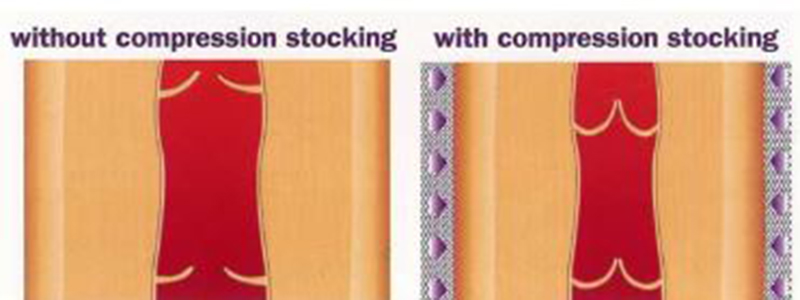
- Treats most venous disorders
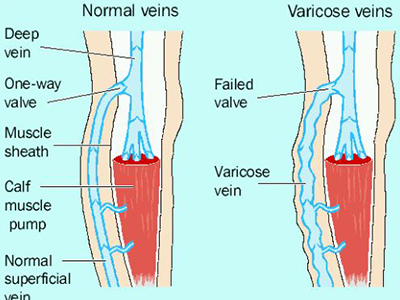
Should You Wear Support Socks for Long Flights?
Before purchasing compression socks or support hosiery, you should make sure they will benefit your health and comfort. While compression stockings and compression socks are generally beneficial for long flights, it is important that they meet your needs. Compression socks and support hosiery can be worn on long haul airway flights for several reasons. You might be an experienced flyer looking to ease some discomfort. Maybe you are looking for a gift for a travel-obsessed friend or family member in your life; or you are about to start traveling more. You could have been diagnosed with venous incompetence conditions, such as deep vein thrombosis (DVT), blood clots, aging, and cancer among other illnesses, where you are recommended to wear compression stockings and compression socks or this could be your first ever time hearing of them. No matter why you are here, we are excited and happy to provide you as much information and answer as many of your questions as possible. Compression stockings and compression socks are a great addition to closets of long haul flight travelers.
What is Considered Long Flight?

You can define a long haul airway flight in whatever way you want. For some, a four hours long haul flight is the longest they have ever been on. For others, they travel across the world on a regular basis. No matter what you consider a long haul airway flight, if you have experienced discomfort while flying, support hosiery or compression socks could benefit you.
What if I Have Never Flown Before?


If you have not flown before, or flown often, you might not know how your body will respond to long haul airway flights. That’s OK! Most people actually wear compression socks and support hosiery as a preventative measure. Anyone can wear them, you just need to make sure they are comfortable for you. In fact, you have probably seen a lot of professional athletes wearing compression socks or support hosiery. You don’t have to be nervous about wearing compression stockings on your very first flight because they are a normal thing to wear. They are just meant to help you stay comfortable and to prevent blood from pooling in your lower legs.
How Does Compression Help
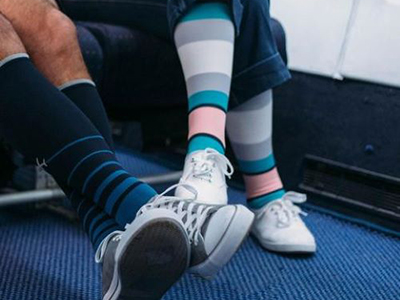
When you are sitting still at a high altitude for hours at a time, your body does not pump blood as efficiently as it usually does. Blood can pool in your lower legs and cause swelling, discomfort, pain, cramping, or blood clots. A lot of people use simple stretches at their seats or getting up to walk around to help mitigate the side effects of long haul airway flights, but sometimes that just isn’t enough. Those little tricks for getting blood pumping are actually really useful when used in conjunction with compression socks and support hosiery.
What Conditions – DVT
There are several conditions that are normally induced by long haul airway flights, especially when flying commercial over thousands of miles and long haul hours. Here are the most common conditions that affect most long haul flight travelers:
Economy Class Syndrome and DVT
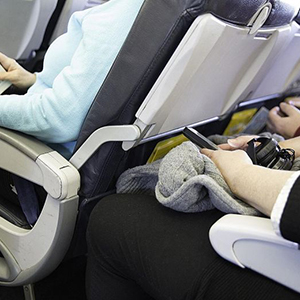
Economy class syndrome is similar among commercial long haul airway flight travellers as seating becomes more and more cramped and movement more and more restricted. Preferably, airway travellers should flex their knees and ankles and stretch their legs as much as possible and walk up and down the aisle at regular intervals. Today, the so called “economy class syndrome” is not frequently talked about since at this time there’s no substantial evidence that suggests deep vein thrombosis or DVT and pulmonary embolism are mainly caused by long haul airway flight environment. But research suggests that deep vein thrombosis or DVT is more likely to happen in airway travellers who are susceptible to venous incompetence. In fact, susceptible airway travellers will already be in receipt of deep vein thrombosis or DVT before they board a plane.
What is DVT – Detailed Analysis?
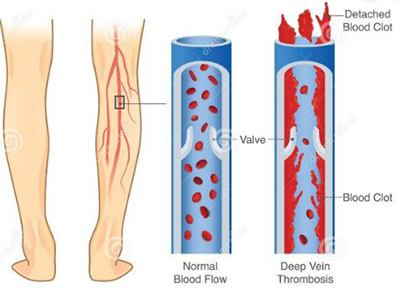
Good blood flow in the legs is usually preferred. But vein valve incompetence or venous insufficiency can potentially disrupt normal blood flow, leading to hemorrhage when blood clots aren’t formed and deep vein thrombosis when too many or too large blood clots are formed too rapidly. Thrombosis can take place in the veins or in the arteries.
Signs and symptoms
Tenderness and Pain
Tenderness and pain of the thigh or calf are the most commonly occurring symptoms in long haul airway flight travelers. Usually, the pain is not characteristic and may vary from an ache to cramping, from mild to severe, and from dull to sharp. It may be constantly or intermittently present in the deep veins. Arterial or vein insufficiency normally presents more abruptly in onset, and may show a pale or cold leg, without noticeable edema or pulses.
Homans’ Sign
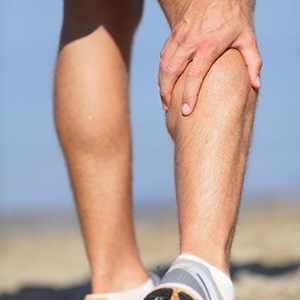
One of the most common symptom of deep vein thrombosis or DVT following a long haul airway flight is a positive Homans’ sign. This is pain in the calf with forced bending backward of the foot. The Homans’ sign is normally presumed to be prognostic for the presence of deep vein thrombosis or DVT following a long haul airway flight. The Homans’ sign test involves a few easy steps. The way you perform the test is you take your ankle (make sure your leg has a little bit of flexion) and you Dorsey flick it a little bit and you squeeze the calf. If you have deep vein thrombosis or DVT after a long haul airway flight or during a long haul airway flight, you will experience some discomfort right down the central aspect of your calf. In this case, the calf is normally hot, red, and swollen compared to a healthy calf. You may notice some gross swelling all the way down into your foot and ankle. Dorsiflexion is important when performing the Homans’ test. If the calf and the hamstring regions are really tight, you are going to experience some discomfort from doing the Homans’ sign test. You might be too sensitive. The other issue is that if you have nerve root pressure or sciatica from your lumbar spine, you may experience some pain going down your leg. You can easily misinterpret this condition for deep vein thrombosis following a long haul flight.
Popular Articles on ComproGear
Wide Calf Compression Socks https://comprogear.com/wide-calf-compression-socks/
Over the Knee Compression Socks https://comprogear.com/over-the-knee-compression-socks/
Thigh High Compression Socks https://comprogear.com/thigh-high-compression-socks/
What are the Best Socks for Circulation https://comprogear.com/what-are-the-best-socks-for-circulation/
Compression Stockings mmHg Chart https://comprogear.com/compression-stockings-mmhg-chart/
Best Compression Socks for Edema https://comprogear.com/best-compression-socks-for-edema/
Best Compression Socks for Varicose Veins https://comprogear.com/best-compression-socks-for-varicose-veins/
How Long to Wear Compression Socks for Edema https://comprogear.com/how-long-to-wear-compression-socks-for-edema/
Graduated Compression Leggings https://comprogear.com/graduated-compression-leggings/
Other Symptoms
Apart from the Homans’ sign, there are other signs of deep vein thrombosis or DVT you should look out for, which may include the Lowenberg’s sign, Moses’ sign, Peabody’s sign, and Pratt’s sign.
Lowenberg’s Sign
The Lowenberg’s sign is a reliable symptom of deep vein thrombosis following a long haul airline flight (this sign presents pain in your calf when you inflate a cuff up to one hundred and eighty millimeters of mercury on your thigh).
Pratt’s Sign
The Pratt’s sign is another unique indication of deep vein thrombosis following a long haul airline flight (which is defined by distension of your pretibial vein).
Moses’ Sign

The Moses’ sign is a significant indication of deep vein thrombosis after or during a long haul airline flight (this condition is defined by increasing pain when you compress your calf in a frontal backward direction).
Peabody’s Sign
Peabody’s sign is also considered a significant indication of deep vein thrombosis following a long haul airline flight (the condition is defined by spasms of the calf muscles when you elevate your leg with a stretched foot).
What Remedies Should Be Included with Support Socks
Apart from using compression socks and support hosiery for long haul airline flights, you can consider other remedies, such as exercises to help prevent stiffness as well as boost blood flow, even during a short airway flight. As you do your exercises, you should kindly take into consideration the space as well as the safety of other long haul airway flight travelers. Make sure you breathe normally and your back is positioned in a straight position. Avoid stretching yourself suddenly or overstretching to avoid unnecessary risk. Here are a few exercises you can do along with the use of long haul airway flight compression socks or support hosiery:
Knee Lifts
- Knee Lifts: To do this exercise, you have to lift your leg with your knee bent, make sure you contract your thigh muscles, and then repeat the knee lifts twenty times for each leg. Try not to pull on your neck and head with your arms, and make you exhale as you lift your knee for the exercises to be effective for treating deep vein thrombosis following a long haul airway flight.
Ankle Lifts
- Ankle Circles: To do this exercise, raise your feet a few inches of the floor and then slowly rotate your individual foot in a clockwise direct at least ten times. Then repeat the exercise as you rotate your feet counter-clockwise to help alleviate deep vein thrombosis following a long haul airway flight.
How to Choose Support Hosiery
Having known what deep vein thrombosis is and how it affects you during long haul airway flights, it is time you learnt the basic tips for choosing the best long haul airway flight compression socks and support hosiery.
Made to Measure or Off the Shelf
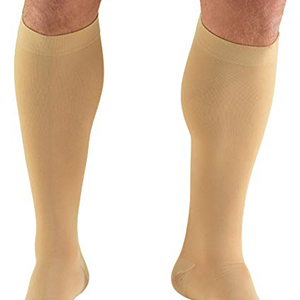
There are two styles of long haul airway flight compression socks and support hosiery you will come across in the market: made to measure and off the shelf. Compression socks are normally provided in standard sizes (off the shelf) rather than made to measure. There is nothing particularly wrong with standard sizes. But they may not be a good fit for people with very large or small legs. Support hosiery that don’t provide a good are not effective for treating deep vein thrombosis when travelling by an airway. On the other hand, made to measure support hosiery are knitted to anatomical shapes in order to meet your individual needs. They provide the ideal medical and orthopedic support you need for treating deep vein thrombosis when travelling by a commercial airway.
What is the Ideal Pressure Level?
Overview
There are about five medical support levels, designated o to IV. In each level, there are available in various lengths, which range from knee length, thigh length, to full length pantyhose. You have to choose a support level and hosiery length with respect to your ability to tolerate pressure. Elderly airway travellers may have difficulty applying support hosiery, especially thigh length hoses. But there are unique devices that have been created to help with application.
Classes of Compression Socks that Can Help with DVT
Class 0 hosiery are normally indicated in mild functional venous insufficiency that usually results in minimal varicose veins with associated leg fatigue or mild edema. Deep vein thrombosis that affects airway travellers should be treated with either class I, class II, or class III. Leg ulcers treatment may require class II or class III support hosiery. Class IV may not be the best choice for treating airway travelers’ deep vein thrombosis because this level is normally reserved for those with severe symptoms and have difficulty controlling edema.
How to Wear Support Hosiery
There are various devices you can use to apply support hosiery in order to improve the effectiveness of treating deep vein thrombosis that affects airway travelers. Turn the support hosiery inside out and fit it over your toes and heel. Then roll the hosiery up your leg gently. Once the hoses are on, make certain the top of the hoses is about two fingers’ widths below the crease of your knee. You can also make the application easier by using unique devices, such as a donning device and a doff-n-donner.
- Pull-On Application
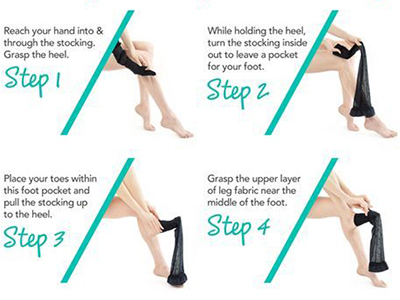
- Use a Donning Device
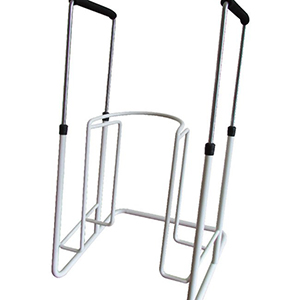
- Use a Doff-n-Donner
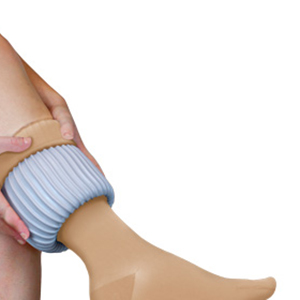
Overall Benefits of the Best Support Hosiery
There are many benefits of using pressure hosiery, including:
- Superior blood flow to the legs

- Treat DVT

- Enhance lymphatic drainage

- Get rid of varicose veins

- Get rid of spider veins
- Prevent and reduce leg swelling
- Alleviate leg fatigue
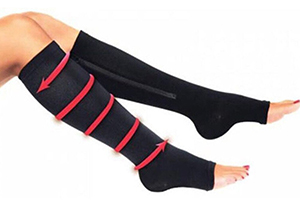
- Prevent pooling and clotting
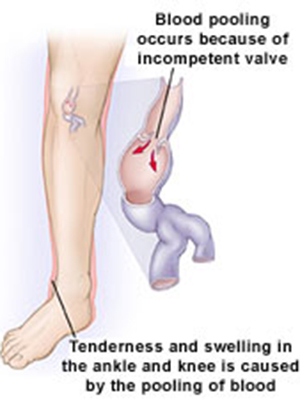
- Treat venous ulcers
- Keep your legs warm in cold weather
Summary
You are supposed to determine the style of your preferred support hosiery before you get into the market. A number of factors may influence the type and style you select. These may include: your age, your dexterity, whether or not you are disable, the condition of your skin, and the appearance of the support hoses. An important point that you must consider is your dexterity. Although, you may be used to applying thigh length hosiery, you may find it impossible to manipulate stiffer support hoses. So, choose a product that will actually work for you.
This page last updated November 5, 2022
